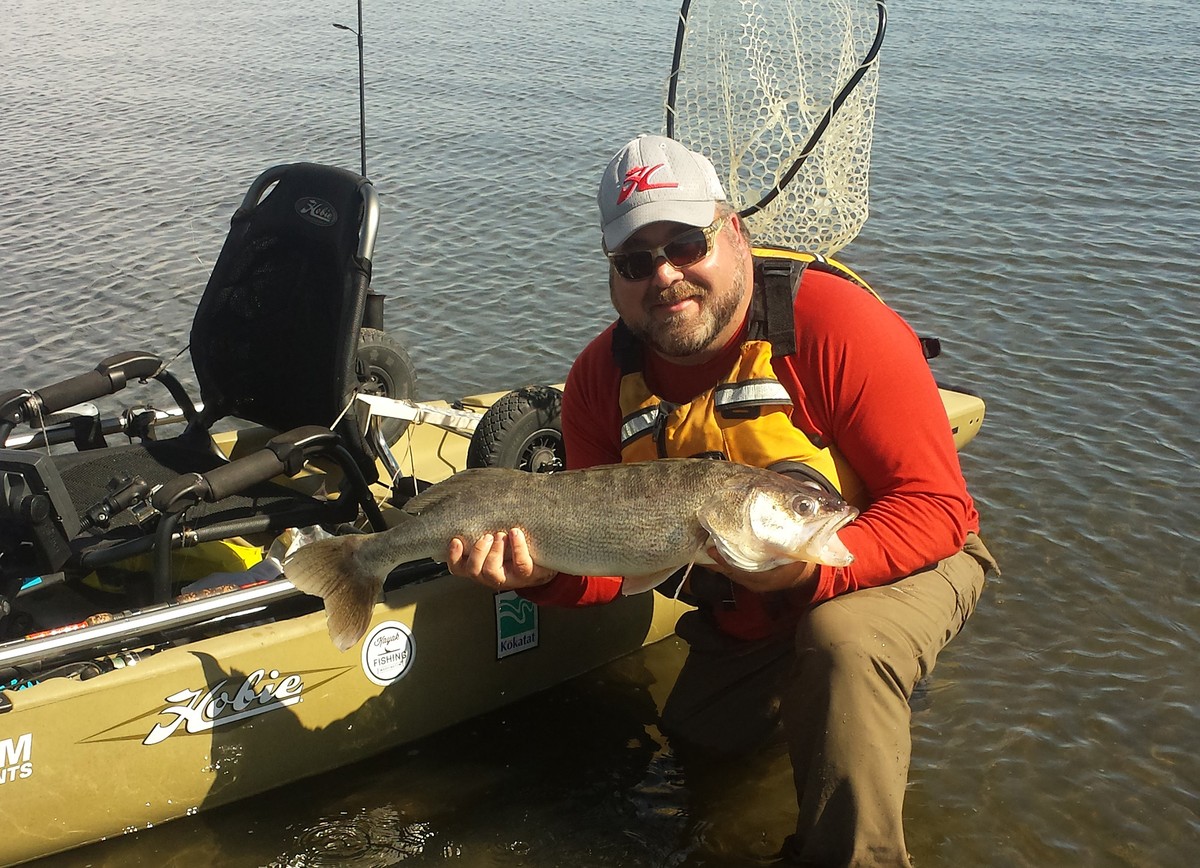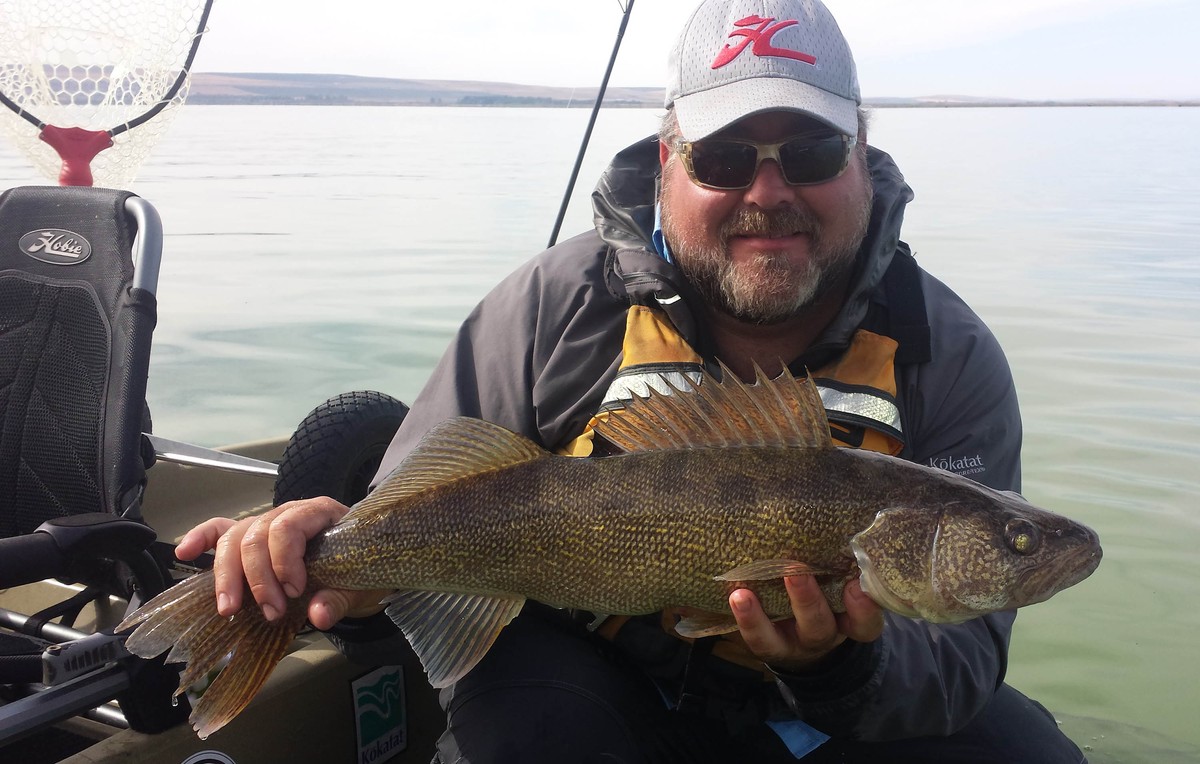
Summer is over. The personal watercraft and pleasure boats will begin to disappear as the temperatures start to dip. I’ll be swapping out sunscreen and a face buff for my Kokatat Angler Dry Suit.
It’s also that time of year that one of the best tasting fish start moving into shallower water. It’s Walleye Weather.
Just a short drive over the Cascade Mountains from Seattle lies some of the best walleye fishing the Northwest. The Potholes Reservoir sits just above the mighty Columbia River, home to a variety of different fresh water fish species including walleye, smallmouth and largemouth bass, yellow perch, burbot, catfish, carp and rainbow trout.
In my opinion, there’s no better way to target fall walleye than in a Hobie® Kayak. The MirageDrive’s® stealth-like silent propulsion paired with hands free fishing allow you to detect the most subtle bite. It can mean the difference between landing or losing a fish.
One of the most popular ways to fish for walleye is slow trolling (at less than 1 mph) a bottom walker weight with a spinner and a worm threaded up the shank of a Slow Death hook. The bottom walker keeps the spinner just off the bottom. The spinner and slightly turned Slow Death hook provide just enough action and scent to draw the walleye close to take a bite.

Important tips to keep in mind.
Do your research into the lake’s bathymetry. Many fish finders come with a card slot that you can add a Navionics Map Chip that will show you a depth chart of the lake including peaks and drop offs. Walleye like being right on the slope or around a rocky bottom where they can quickly ambush anything that goes by them. Start shallow and go deeper as the daylight becomes brighter. I’ve caught many walleye in 2- to 4-feet of water in the early part of the morning or into the evening. You can always go deeper if you’re not finding fish.
Have your tackle ready. I like to tie my own walleye spinners. Pre-tied ones are available for purchase. Take them out of the package ahead of time and wind them around a foam board or tube. There’s nothing worse than trying to get a pre-tied leader out of a package and it knotting up on you.
Bring extra bottom walker weights. I like using 1.5- to 2-ounce sizes. Bring extra because you will lose a few in the rocks. Keep your night crawler worms cold (I’ve heard of some walleye fishermen who soak their worms in ice water to keep them hydrated and plump). At minimum, be sure they aren’t baking in the sun.
Having your hands free and your rod in hand can help you to feel the smallest bite or even help knowing if you’ve snagged bottom. If you feel a strike or catch bottom, be sure to reel in and check to see if your hook is still sharp and worm is still threaded up the shank of the hook. A dull hook loses fish. Letting the worm dangle off the end will give the lure an unnatural presentation.
In addition to terminal tackle I bring along a couple medium weight spinning rods. Your terminal tackle of a bottom walker and spinner can be tied on when you start fishing. I set one rod up for trolling. I attach a Blade Bait to the other. If trolling isn’t working for you, a blade bait allows you to sit still in your kayak and cast. Allow the Blade Bait to hit the bottom slightly lifting the lure off the bottom with a steady slow retrieve.

Trophy Sized Walleye
Last fall I got a call from a buddy with a tip that the walleye fishing was off the charts at the Potholes. I was on the road that next morning. We started off the morning catching some keeper sized walleye to fill our stringers. We trolled to the end of the lake working the shoreline when my rod buckled over. This was a bigger fish that I wanted to bring into the shore and photograph before letting her go. She taped out at 29”.
Less than an hour later we worked our way up to an area called “The Dunes” which is where water from a marshy 20,000 acres dumps into the reservoir. The area is all sand bottom with various humps and drop offs. As I trolled I noticed a big drop off from 12 to 24 feet. It was then I felt a thump in my rod and my drag started screaming. I tightened down on the drag and watched as this walleye leaped out of the water twice, made a couple of runs under the kayak before I could net her. This was by far my biggest walleye – measuring 33 inches! I can only hope that I’ll be landing a few of her offspring in the months to come.
Check back weekly for new videos and stories by the 2016 Hobie Fishing Top Guns.
